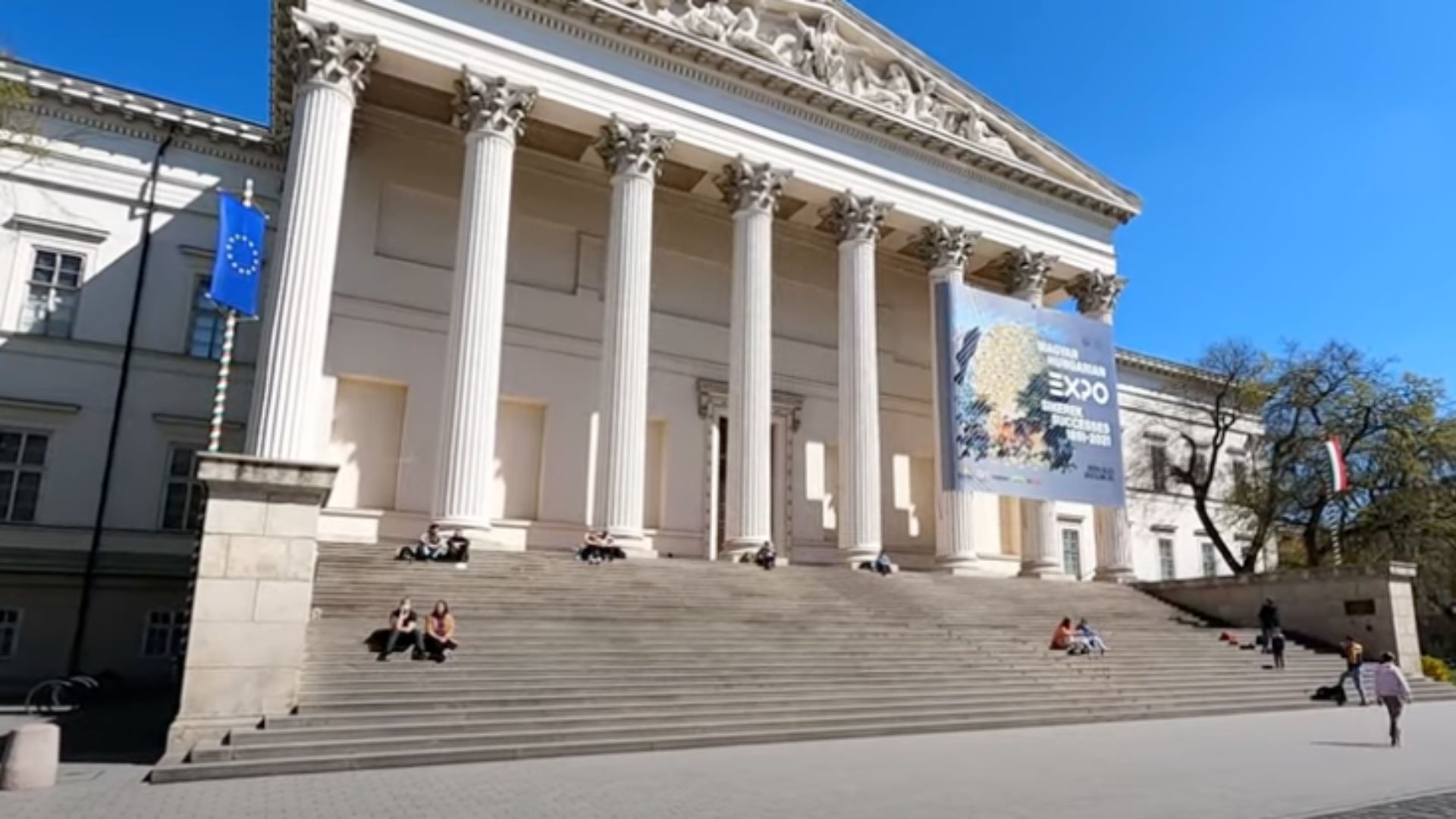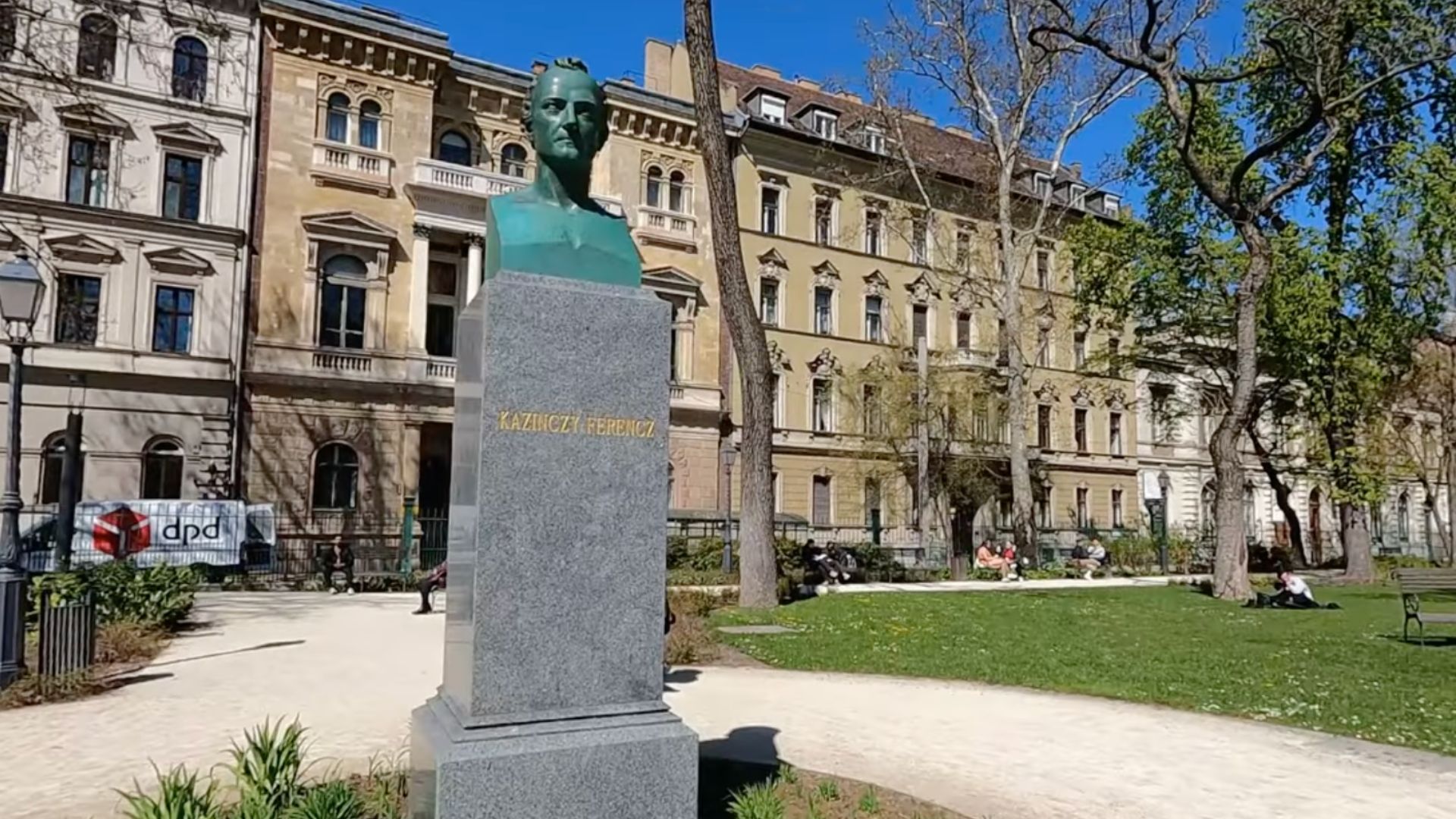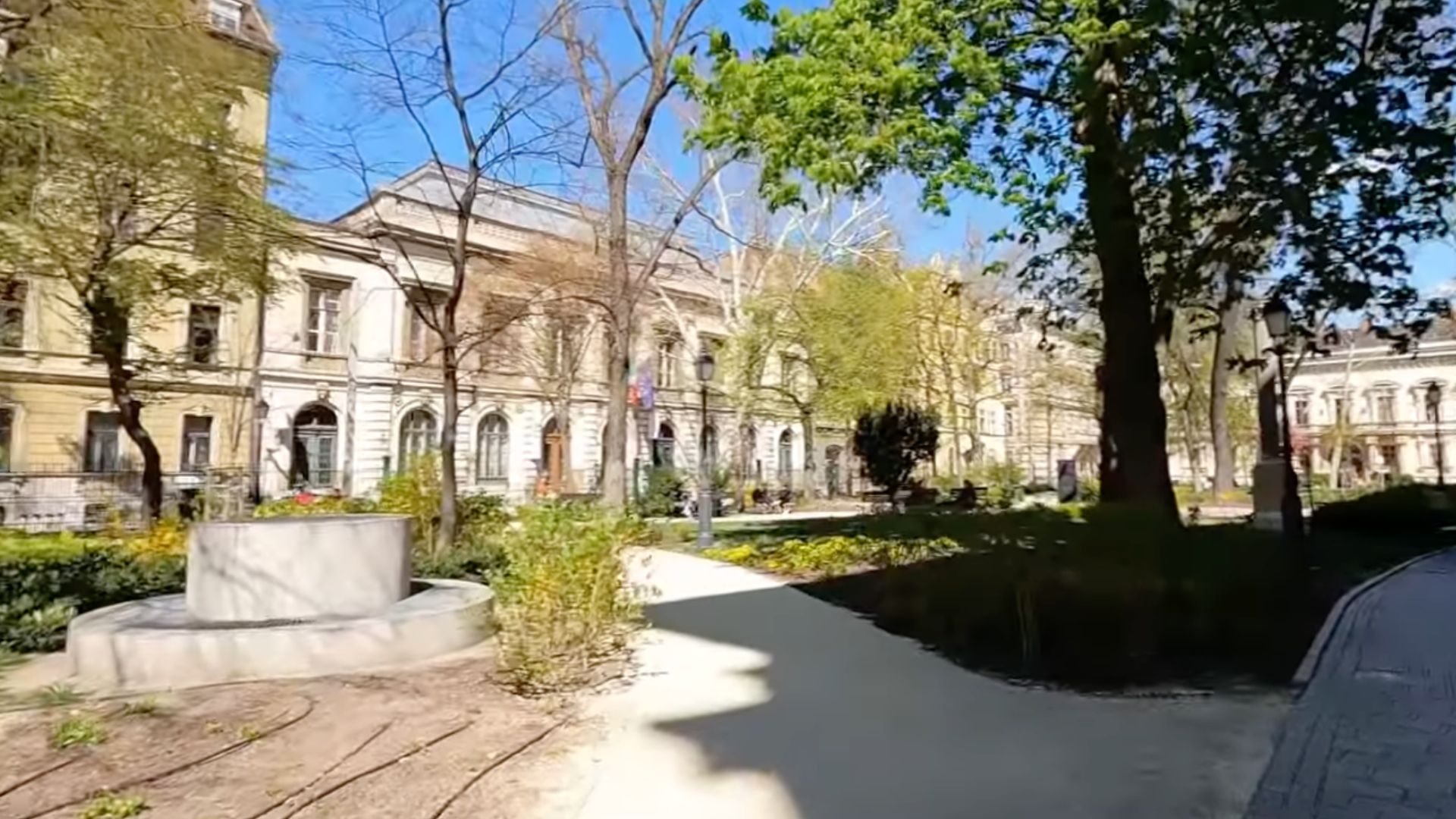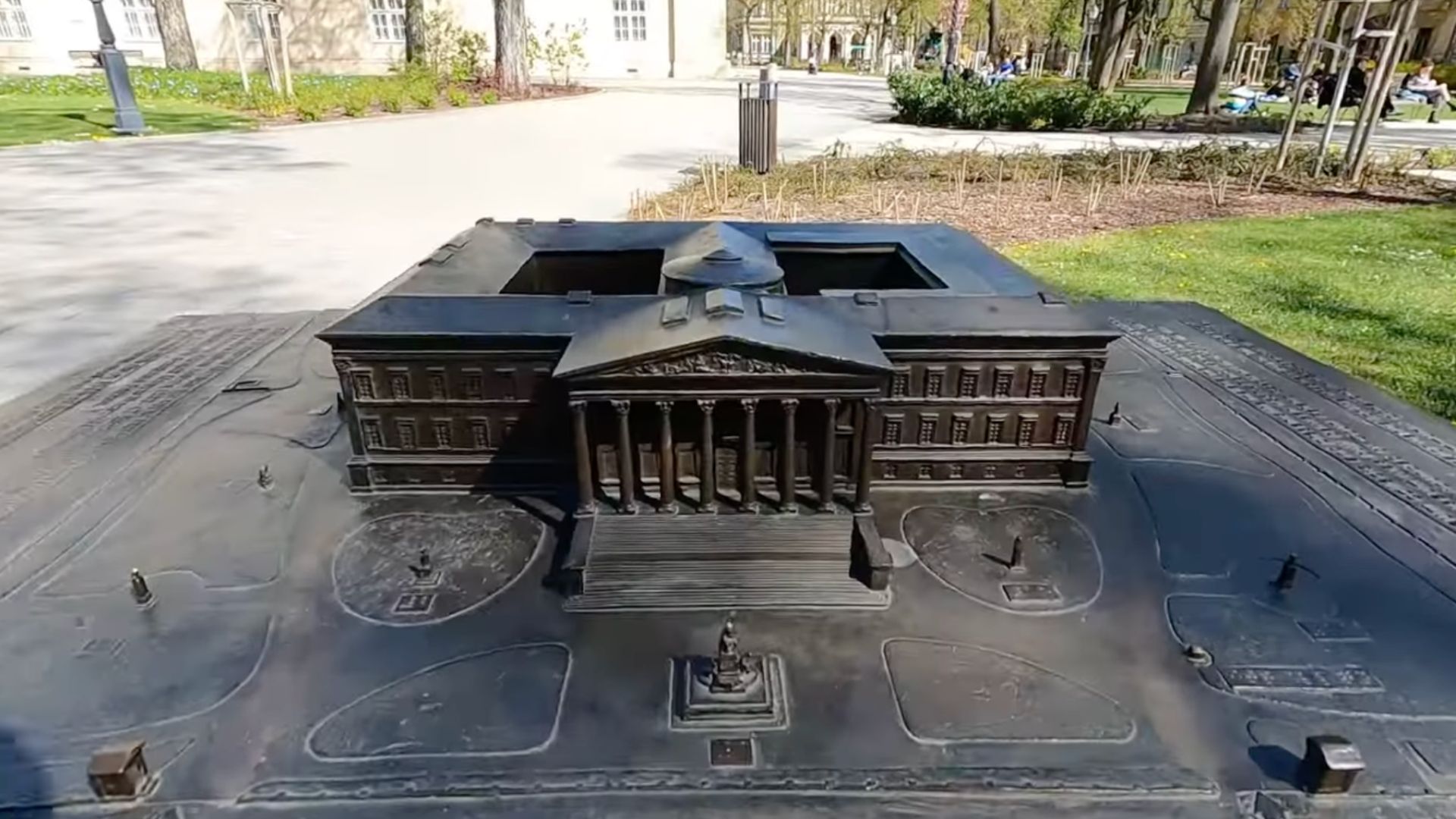The Hungarian National Museum is a treasure trove of history and culture, offering an unmissable journey through Hungary’s rich past.

Highlights
- Wander through the grand halls and admire the opulent architecture that houses centuries of Hungarian history.
- Unearth treasures from the Roman era, including intricate mosaics and ancient relics that tell tales of bygone civilizations.
- Marvel at the regal coronation mantle of King Saint Stephen, a splendid artifact symbolizing Hungary’s rich royal heritage.
Tickets & Tours
Planning a visit to the Hungarian National Museum? Here’s the lowdown on tours and tickets.
General admission provides access to Hungary’s rich history, with reduced rates for seniors, parents with multiple children, and young explorers. Group tickets are available for parties over ten, making it ideal for school trips or family reunions.
For a comprehensive experience, consider the Full House Ticket, which grants access to all exhibitions and offers family packages. Free admission is available for children under six, adults over seventy, disabled persons with a companion, teachers, journalists, and ICOM cardholders, with additional free entry on specific national holidays and for young citizens on the third Saturday of each month.
Enhance your visit with guided tours in foreign languages and special programs like birthday parties or garden visits. For convenience, purchase your tickets online to skip the lines and ensure entry on busy days.
Budapest Card
With the Budapest Card, you can enjoy free entry to the Hungarian National Museum, making it a fantastic value for visitors keen on exploring Budapest’s rich history. The card offers numerous benefits, including unlimited public transportation and free or discounted entry to many other top attractions, ensuring you get the most out of your visit.
Here are three popular attractions you can also visit with the Budapest Card:
- Hungarian National Gallery: Home to an extensive collection of Hungarian art.
- Buda Castle: Explore the historic castle and its museums.
- Lukács Thermal Bath: Relax in one of Budapest’s famous thermal baths
More info about the Budapest Card ->
Opening Hours
Note that the museum is open from Tuesday to Sunday, 10:00 AM to 6:00 PM, and closed on Mondays. The museum garden, however, is accessible daily from 5:30 AM to 9:00 PM, offering a serene outdoor space. It’s wise to check the museum’s website for any special hours, holiday closures, or updates on sections like the Roman Lapidary, which may be temporarily closed for events or maintenance.
What to see and do
There are numerous things to do at the Hungarian National Museum that will make your visit unforgettable.
Explore the Permanent Exhibitions
One of the best ways to immerse yourself in Budapest’s history is by visiting the Hungarian National Museum. This gem offers a detailed historical journey through its permanent exhibitions, covering Hungarian history from prehistoric times to the modern era. Imagine walking through time—from the Roman occupation and medieval period to the Ottoman rule and beyond.
As you wander through the exhibits, you’ll come across fascinating artifacts like the Hungarian Coronation Mantle, a stunning piece of medieval craftsmanship. Or, marvel at the Roman stone inscriptions that tell stories from a bygone era. The museum is thoughtfully laid out in chronological order, making it easy to understand the evolution of Hungarian culture and society. This layout helps connect the dots and gives you a holistic view of Hungary’s rich past.
Insider Tip: Don’t rush through; take your time to read the descriptions and immerse yourself in each era. It’s like binge-watching a historical series, but in real life!
Admire the Architecture

The Hungarian National Museum isn’t just about what’s inside. The building itself is a work of art. Designed by Mihály Pollack, this neoclassical structure resembles an ancient temple, complete with grand columns and a majestic pediment. It’s like stepping into a different world as soon as you see it.
Once inside, you’ll be greeted by a grand staircase adorned with paintings by Károly Lotz and Mór Than. These details add to the museum’s luxurious atmosphere. And don’t miss the statues of revolutionary poets János Arany and Sándor Petőfi at the entrance. These statues commemorate the Revolution of 1848 and add a layer of historical significance to your visit.
Pro Tip: Consider taking a guided tour to dive deeper into the architectural details and historical context of the building. Trust me, it’s worth every minute.
Stroll Through the Museum Garden

The museum garden is more than just a pretty backdrop; it’s a place steeped in history and culture. This garden played a significant role in historical events, like the revolutionary rally on 15 March 1848. Today, it serves as a cultural hub, hosting events like the annual May Festival of Museums.
Walking through the garden feels like stepping into a different time. The lush greenery and well-maintained paths provide a serene escape from the hustle and bustle of Budapest. It’s a great spot to relax and soak in the atmosphere.
Fun Fact: The garden often hosts concerts and festivals. If you time your visit right, you can enjoy live music or a cultural event, adding another layer to your experience.

Participate in Educational Programs and Workshops
The Hungarian National Museum goes beyond static exhibits to offer a range of educational programs and workshops. These activities make history accessible and engaging for all ages. Whether you’re interested in guided tours, hands-on workshops, or family programs, there’s something for everyone.
Special exhibitions and interactive displays are designed to captivate your interest. They provide a deeper understanding of Hungarian culture and history in a fun and engaging way.
Quick Tip: Check the museum’s website beforehand for the schedule of upcoming events and exhibitions. This way, you can plan your visit to coincide with something that piques your interest.
Discover Hidden Gems and Special Exhibits
While the main exhibits are captivating, don’t overlook the museum’s hidden gems. For instance, the Semmelweis Museum of Medical History is a specialized collection that offers a unique glimpse into medical advancements and practices. There are also temporary exhibitions that showcase lesser-known aspects of Hungarian culture and history.
These special exhibits often fly under the radar but are definitely worth exploring. They offer a fresh perspective and add depth to your understanding of Hungary.
Insider Advice: Explore the museum’s online resources or ask the staff for recommendations on must-see special exhibits. Sometimes, the best finds are the ones that aren’t heavily advertised.
Visit on National Holidays for Free Entry
Did you know you can visit the Hungarian National Museum for free on certain national holidays? Yes, you read that right! On days like 15 March, 20 August, and 23 October, the museum waives its entry fee. This is a fantastic opportunity to explore the museum without spending a dime.
National holidays also come with their unique celebrations, adding to the ambiance and making your visit even more special.
Money-Saving Tip: Plan your visit around these dates to take advantage of free entry and experience the national celebrations. It’s the perfect way to enjoy a budget-friendly, enriching day out.
Directions
The Hungarian National Museum is easily accessible by various modes of transportation. You can take the metro to Kálvin tér (M3 and M4 lines) or Astoria (M2 line), both within a short walking distance from the museum. Tram lines 47, 48, and 49 also stop at Kálvin tér, as do bus numbers 9, 15, 115, and trolleybus line 83. Additionally, Astoria is serviced by bus numbers 5, 7, 8, 107, 110, 112, 133, 178, 233, and 239.
For cyclists, dedicated cycle lanes are available on Múzeum körút, and nearby MOL Bubi bike-sharing stations include 0805 Bródy Sándor utca – Múzeum körút and 0905 Kálvin tér. If you’re driving, note that the museum lacks its own parking facilities. The nearest parking option is the underground car park on Pollack Mihály tér.
Nearby Places
Great Market Hall: Budapest’s largest and oldest indoor market, the Great Market Hall dazzles with its stunning architecture and bustling atmosphere. It’s the perfect place to shop for fresh produce, spices, and unique Hungarian crafts and souvenirs.
Dohány Street Synagogue: The largest synagogue in Europe, this iconic building showcases a beautiful Moorish Revival style and houses a memorial park and the Jewish Museum. It’s a poignant site with deep historical roots in the Jewish community.
Kalvin Square: A major public transport hub conveniently located near the Hungarian National Museum. The square is surrounded by charming cafes, shops, and amenities, making it an ideal spot for a break during your explorations.
Budapest History Museum: Located within the Buda Castle, this museum takes you on a journey through Budapest’s history from prehistoric times to the modern era. A visit here also gives you the chance to explore the historic castle grounds.
Hungarian National Gallery: Situated in the Buda Castle complex, the gallery features an extensive collection of Hungarian art from medieval times to the present. Its terraces offer stunning views over Budapest, adding an extra layer of beauty to your visit.
Did you know that: (4 Interesting Facts!)
- The Hungarian National Museum is the oldest public museum in Hungary, founded in 1802 by Count Ferenc Széchényi, who donated his vast library and collection of coins.
- The museum’s grand staircase is adorned with stunning murals by Károly Lotz, making it a visual masterpiece even before you enter the exhibition halls.
- Not just a reservoir of history, the Hungarian National Museum also played a pivotal role in the 1848 Hungarian Revolution; it was here that Sándor Petőfi recited his famous “National Song,” igniting the revolutionary spirit.
- The museum houses the Hungarian Coronation Mantle, a precious artifact dating back to the 11th century, which was used during the coronation of Hungarian kings.
History
An Almost 200-Year Long Timeline of the Hungarian National Museum:
- 1802: Count Ferenc Széchényi donates his extensive library and collection of cultural artifacts to the Hungarian nation, leading to the foundation of the Hungarian National Museum.
- 1807: The Hungarian Parliament officially endorses the establishment of the museum, marking a significant step towards its creation.
- 1837: Construction of the current museum building, designed by architect Mihály Pollack, begins. The neoclassical design becomes an iconic part of Budapest’s architectural heritage.
- 1846: The Hungarian National Museum opens to the public, becoming a central repository of Hungarian history, art, and archaeology.
- 1848: The museum plays a pivotal role during the Hungarian Revolution. It becomes a symbol of national pride and resistance, with the famous 12 Points of the revolutionaries being read from its steps.
- 1945: The museum suffers considerable damage during World War II, but its collections are preserved thanks to the efforts of the staff.
- 1957: Extensive post-war restoration work is completed, allowing the museum to fully reopen to the public and continue its mission of preserving Hungarian heritage.
- 1989: The museum hosts significant events during Hungary’s transition from a socialist state to a democratic republic, highlighting its ongoing cultural importance.
- 2002: The Hungarian National Museum celebrates its bicentennial, commemorating two centuries of preserving and showcasing Hungary’s rich history.
- Present Day: The Hungarian National Museum remains one of Budapest’s premier cultural institutions, attracting visitors from around the world with its vast collections and historical significance.
FAQs About the Hungarian National Museum
What are the opening hours of the Hungarian National Museum?
The Hungarian National Museum is typically open from 10:00 AM to 6:00 PM, Tuesday through Sunday. Please note that the museum is closed on Mondays.
Is there an entry fee for the Hungarian National Museum?
Yes, there is an entry fee. As of the latest update, adult tickets cost around HUF 2,600. Discounts are available for students, seniors, and groups. Always check the official website for the most current pricing.
Are guided tours available at the Hungarian National Museum?
Yes, guided tours are available and highly recommended for a deeper understanding of the exhibits. Tours are conducted in multiple languages, including English. It’s best to book in advance to secure your spot.
Can I take photographs inside the Hungarian National Museum?
Photography is generally allowed, but flash and tripods are prohibited to protect the exhibits. Some special exhibitions may have specific restrictions, so always check the signage or ask a staff member.
How long should I plan to spend at the Hungarian National Museum?
Plan to spend at least 2-3 hours to fully appreciate the museum’s extensive collection. If you’re a history buff, you might find yourself spending even more time exploring all the exhibits.
Map & Address
The Hungarian National Museum is located in Budapest at the following address:
Hungarian National Museum Múzeum körút 14-16, Budapest, Hungary, 1088
